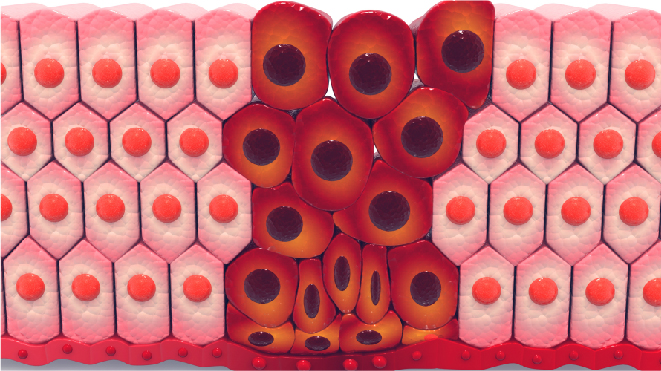Skin cancer can develop in any part of the body, but most often it is developed on skin that is more exposed to the UV radiation. Skin cancer occurs to people of all skin tones. Read more about skin cancer here.


A systematic therapy which uses drugs to cure cancer is known as chemotherapy. These drugs are taken orally or are given intravenously with the help of a needle. These drugs reach out to the cancer cells in the body by travelling along the bloodstream throughout the body. They aim in restricting the growth and division of the cancer cells, eventually killing them. Depending on the tolerance of the patient, type and stage of the cancer, chemotherapeutic drugs are prescribed to the patients by an oncologist. These drugs are given in combination with other chemotherapeutic drugs or treatments, based on the requirement. Read more about drugs prescribed for skin cancer here.
How is chemotherapy given:
This treatment is given in cycles. Post each cycle, the patient is given a rest period to help him/her cope up with the side effects. The duration of the drugs depend on the drugs used.
Chemotherapy is given in the following ways:
Oral Chemotherapy:
The drugs are taken orally. They come with a protective coating which can be broken down in the stomach, allowing the intestines and stomach to absorb the drug.
Intravenous:
Most chemotherapeutic drugs are delivered intravenously. In this method, the drugs are injected into the veins. The drug circulated rapid in the bloodstream to reach the malignant cells. There are several ways of intravenous administration:
- Cannula: A small, thin tube or cannula is fixed temporarily in the veins of the forearm.
- Portable infusion pump: Small pressure pumps are used to deliver the drug at a slower pace.
- Port-a-cath: This system eliminates the discomfort caused by other systems and is used in patients who require constant or frequent administration.
- Central Lines (Tunnelled Catheters): These are placed through the skin in the middle of the chest. They are pushed through the subcutaneous tissue and inserted into the superior vena cava. The catheters have lumens or entrances that facilitate extraction of blood samples and giving the drugs simultaneously.
Drugs used in chemotherapy for skin cancer:
Chemotherapy is often given in cycles. These drugs are prescribed based on the the type and stage of the cancer. Post each cycle, the patient is given a rest period to recover from the side effects of the drugs. Following are the approved chemotherapeutic drugs used for each type of skin cancer
Squamous cell carcinoma:
The following are drugs are prescribed for treating squamous cell carcinoma:
- Cisplatin
- Doxorubicin
- 5-fluorouracil (5-fu)
- Capecitabine
- Topotecan
- Etoposide
These drugs are given intravenously once in few weeks. They are used the main treatment to prevent the cure skin cancer, and a part of palliative treatments as well.
Basal cell carcinoma:
Chemotherapy is not often used in treating basal cell carcinoma..
Melanoma:
Following are the chemotherapeutic drugs used for treating melanoma:
- Temozolomide
- Cisplatin
- Dacarbazine
- Nab-paclitaxel
- Carboplatin
- Vinblastine
- Paclitaxel
Chemotherapy alone is not successful in curing advanced melanoma. The treatment is combined with immunotherapy in such cases. It is known as biochemotherapy.
Another method of using chemotherapy for melanoma is isolated limb perfusion. This surgical method is carried by separating the blood flow of the leg or arm and circulate high doses of chemotherapeutic drugs through the limb. This is done to avoid the exposure of other organs to the drugs.
Side effects of chemotherapy:
While chemotherapeutic drugs treat the malignant cells in the body, a lot of healthy cells are also affected because of which side effects are caused. The side effects are varied for each person, depending on the type of treatment along with the tolerance levels and medical history of the patient. Following are the most common short term effects:
- Loss of appetite
- Diarrhea or constipation
- Nausea and vomiting
- Mouth sores
- Hair loss
- Low white blood cell count (makes the patient prone to infections)
- Low platelet count (leads to easy bleeding and bruising)
- Low red blood cell count (causes anemia and fatigue)
Long term side effects:
- Chemo Brain (difficulty to think focused)
- Heart problems
- Urinary problems
- Kidney problems
- Muscle weakness
- Bone and joint problems
- Ineffective functionality of the lungs
- Fatigue
- Early menopause
- Central Nervous System problems (leading to numbness and tingling)
- Development of secondary cancers
Most of the side effects reduce their impact on the body after a few days post chemotherapy for skin cancer, but in very few cases, the patients will have to deal with a few side effects for lifetime. However, there are various methods to reduce the intensity with which the drugs affect the patients by taking proper health care and having regular check-ups with the doctor. Read more about after care for skin cancer treatments here.
Dosage and survival rate:
Chemotherapy is given in cycles. A lot of factors decide the number of cycles each patient requires. Skin cancer, when cured in the early stages had a high survival rate. Though chemotherapy cannot treat all types of skin cancer, it has a good success rate in the treatment.
The 5-year survival rate gives the number of people who have survived the disease for every 100 people who have been diagnosed with the respective disease. It if represented in percentage.
The 5-year survival rate of melanoma is between 20% and 92% depending upon the stage of the cancer, while that of merkel cell cancer around 60%.
